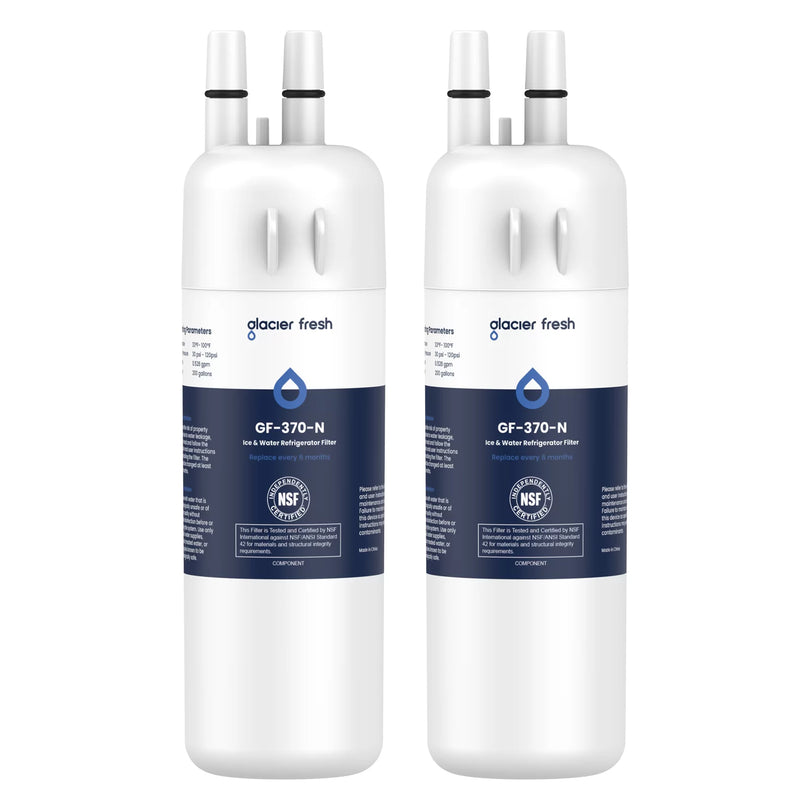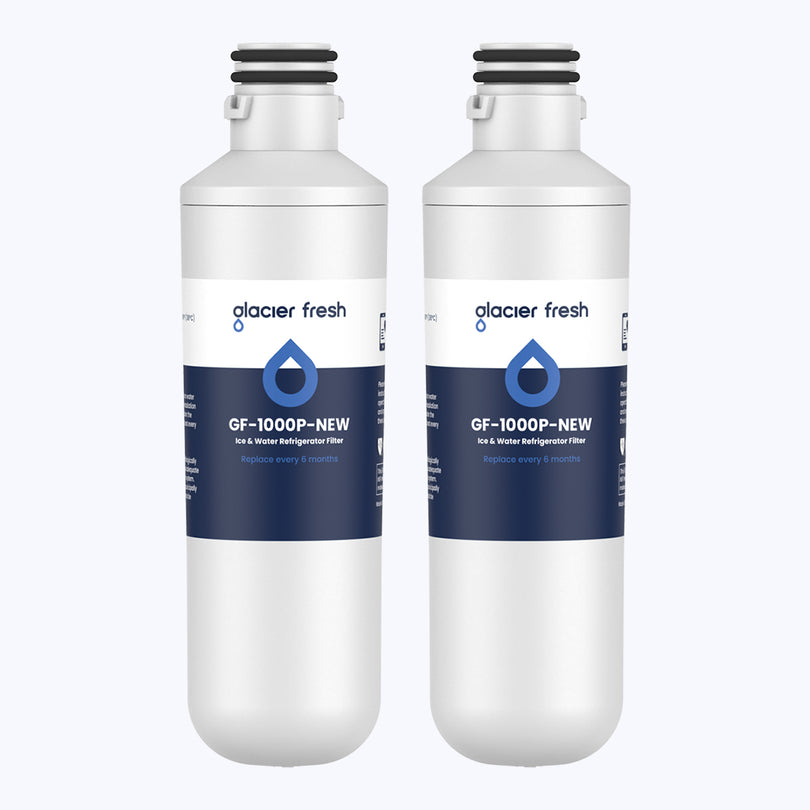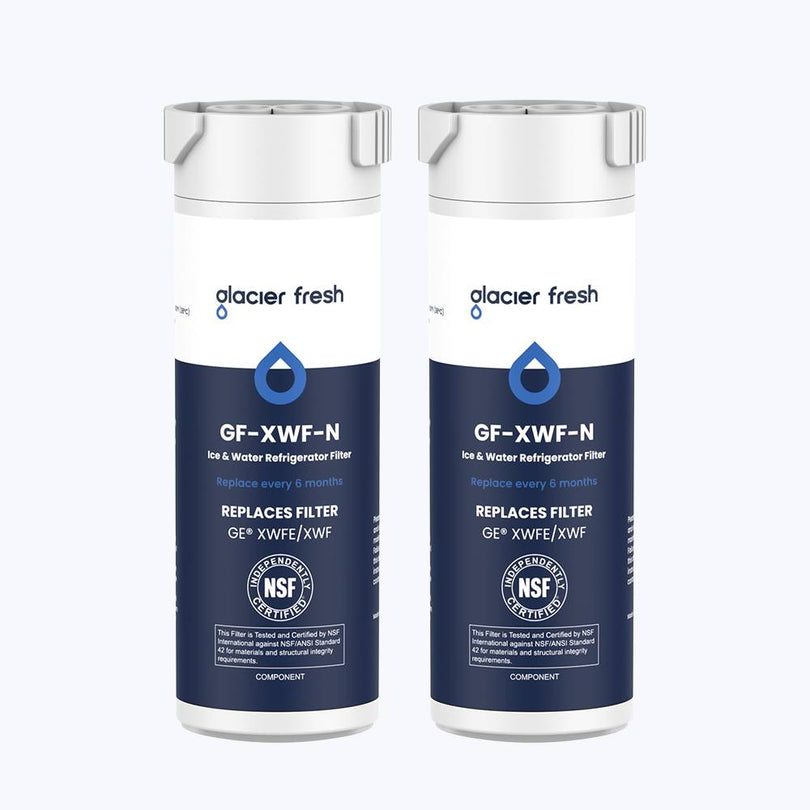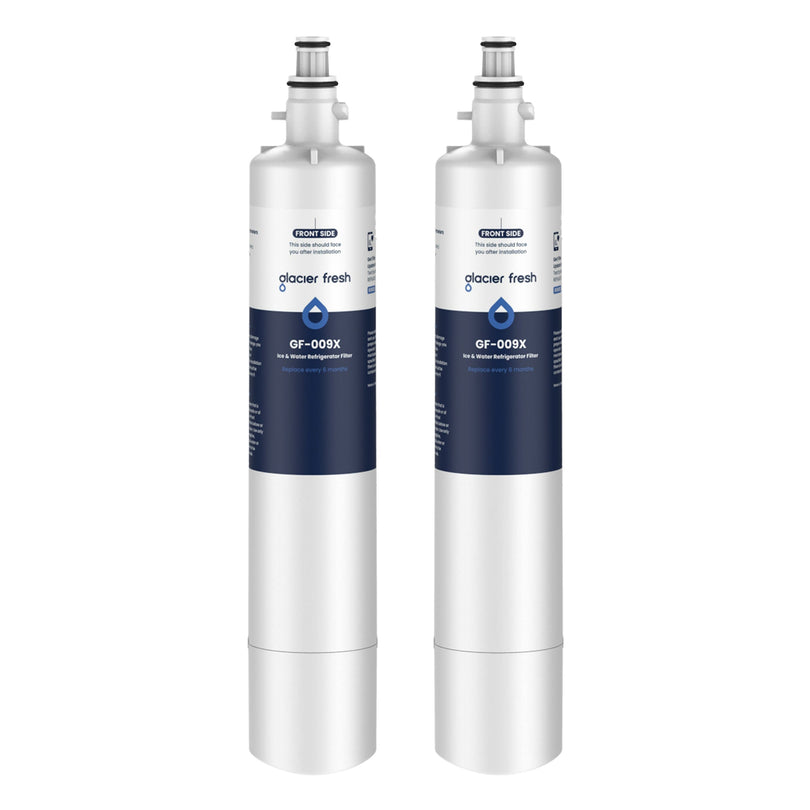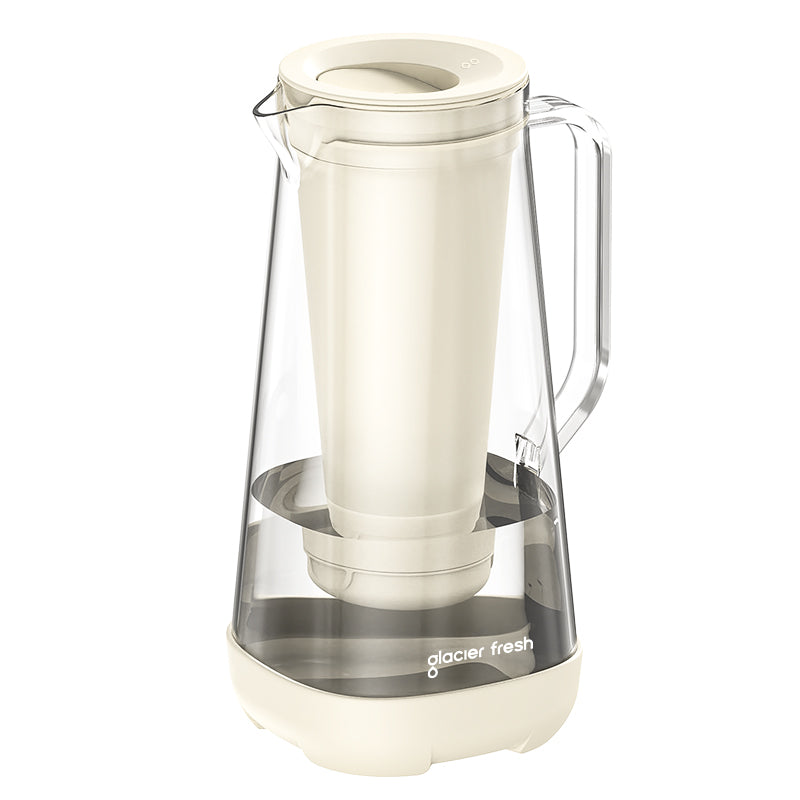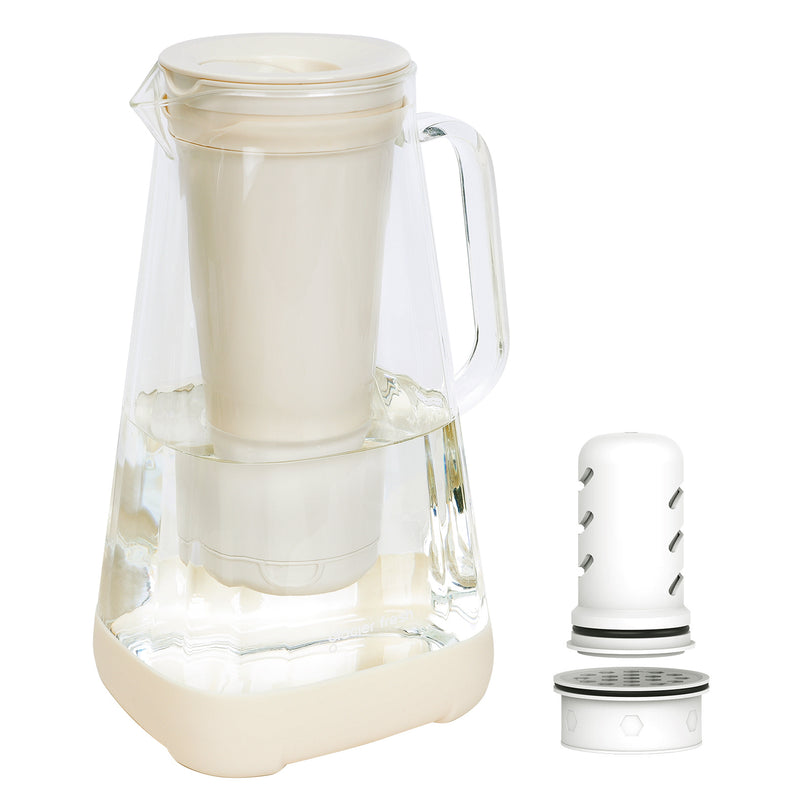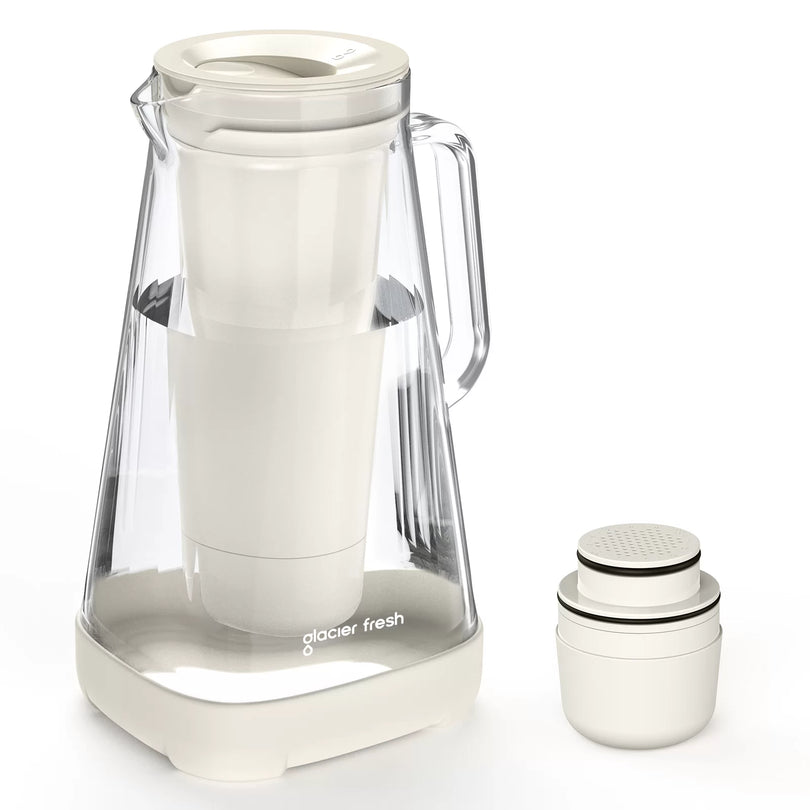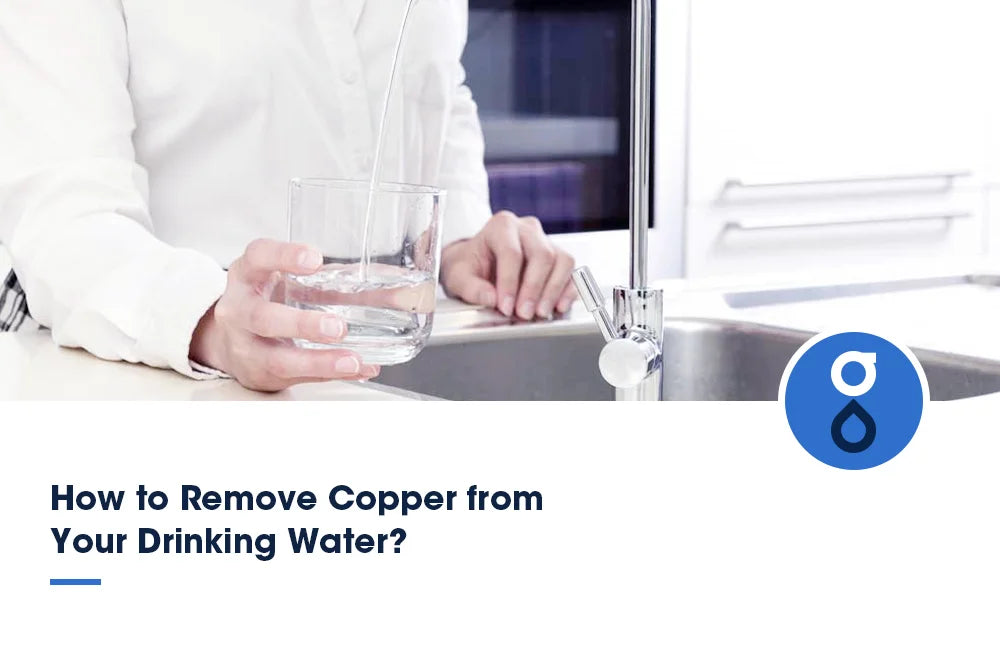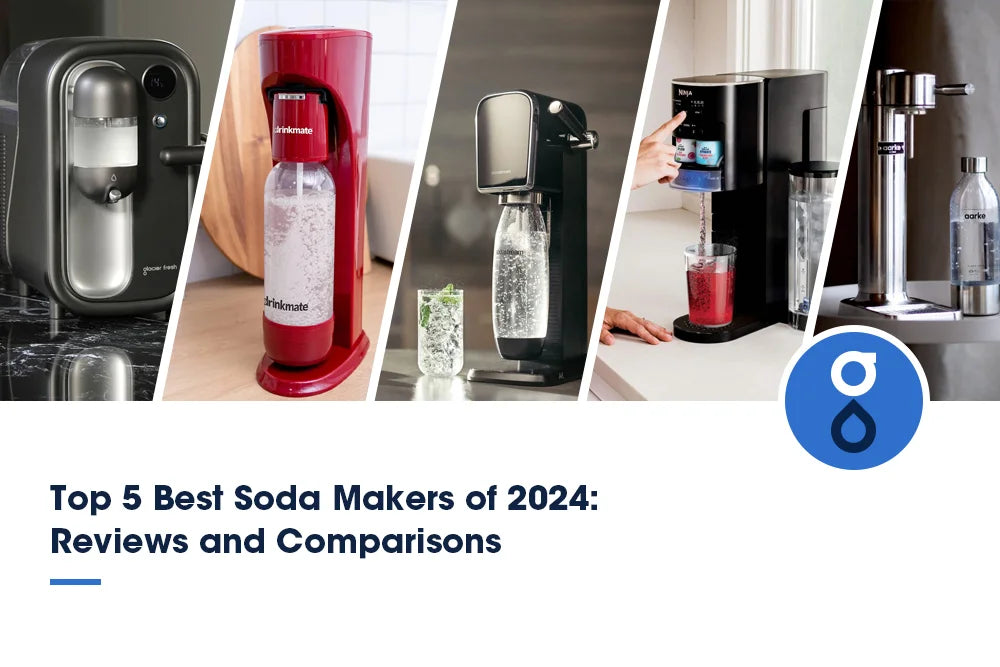Table of Contents:
Was ist Kupfer im Trinkwasser?
Wie gelangt Kupfer ins Trinkwasser?
Gesundheitsrisiken durch Kupfer im Trinkwasser
Die sicheren Kupferwerte im Trinkwasser
Effektive Filtrationsmethoden zur Kupferentfernung
Pflegetipps für kupferfreies Wasser
FAQs
Abschluss
Stellen Sie sich Ihr Trinkwasser wie einen klaren Bach vor, doch in seinen Tiefen lauert Kupfer, das seine Reinheit beeinträchtigt. Sie fragen sich vielleicht, wie Sie Ihr Wasser von diesem unerwünschten Gast befreien können. Keine Sorge, es gibt wirksame Methoden, um kupferfreies Wasser zu erhalten. Wenn Sie die Ursachen der Kupferverunreinigung verstehen und die richtigen Filtertechniken anwenden, können Sie sicherstellen, dass jeder Schluck, den Sie trinken, frei von diesem potenziell schädlichen Element ist. Lassen Sie uns die Wege zu strahlend sauberem Wasser erkunden.
Was ist Kupfer im Trinkwasser?

Wenn Sie sich über das Vorhandensein von Kupfer in Ihrem Trinkwasser Gedanken machen, ist es wichtig zu verstehen, welche Auswirkungen dieses Mineral auf Ihre Gesundheit haben kann. Kupfer kann durch verschiedene Quellen in die Wasserversorgung gelangen, beispielsweise durch Korrosion von Kupferrohren und -armaturen, Erosion natürlicher Ablagerungen oder sogar durch landwirtschaftliche Abwässer.
Kupfer ist zwar in geringen Mengen ein lebenswichtiger Mineralstoff für den menschlichen Körper, übermäßige Mengen können jedoch zu gesundheitlichen Beeinträchtigungen wie Magen-Darm-Beschwerden, Leber- oder Nierenschäden und in schweren Fällen zu Morbus Wilson führen. Aufsichtsbehörden wie die Environmental Protection Agency (EPA) haben Grenzwerte für die zulässige Kupfermenge im Trinkwasser festgelegt, um Ihre Sicherheit zu gewährleisten.
Wie gelangt Kupfer ins Trinkwasser?

Kupfer gelangt über verschiedene Quellen ins Trinkwasser, beispielsweise durch Korrosion von Kupferrohren und -armaturen, Erosion natürlicher Lagerstätten oder landwirtschaftliche Abwässer. Wenn Kupferrohre und -armaturen mit der Zeit korrodieren, können geringe Mengen Kupfer in die Wasserversorgung gelangen. Auch natürliche Boden- und Gesteinsvorkommen können Kupfer enthalten, das sich in Wasserquellen auflösen kann. Auch landwirtschaftliche Aktivitäten wie der Einsatz kupferhaltiger Pestizide oder Düngemittel können zur Kupferverunreinigung des Wassers beitragen.
Wasseraufbereitungsanlagen sind für die Kontrolle des Kupfergehalts im Trinkwasser unerlässlich. Filtration, Sedimentation und pH-Wert-Anpassung können zur Reduzierung der Kupferkonzentration beitragen. Korrosionsschutzmaßnahmen wie die Beschichtung von Rohren oder Korrosionsinhibitoren verhindern zudem das Austreten von Kupfer ins Wasser.
Zu viel Kupfer im Trinkwasser kann negative Auswirkungen auf die Umwelt haben und Wasserlebewesen und Ökosysteme beeinträchtigen. Gesundheitsrichtlinien der Aufsichtsbehörden tragen dazu bei, dass der Kupfergehalt im Trinkwasser innerhalb sicherer Grenzen bleibt, um gesundheitliche Risiken durch Kupferkonsum zu vermeiden. Die ordnungsgemäße Überwachung und Einhaltung dieser Richtlinien sind für den Schutz der öffentlichen Gesundheit von entscheidender Bedeutung.
Gesundheitsrisiken durch Kupfer im Trinkwasser
Magen-Darm-Probleme durch Kupferexposition
Wenn Sie Magen-Darm-Probleme wie Übelkeit oder Durchfall haben, kann dies auf einen erhöhten Kupfergehalt in Ihrem Trinkwasser zurückzuführen sein. Überschreitet der Kupfergehalt Ihres Trinkwassers die empfohlenen Grenzwerte, kann dies zu Magen- und Darmreizungen führen, die zu Magenkrämpfen, Erbrechen und Durchfall führen. Diese Magen-Darm-Probleme sind die Reaktion Ihres Körpers auf das Vorhandensein von überschüssigem Kupfer.
Kupferbedingte Leberschäden
Regelmäßiger Konsum von Wasser mit erhöhtem Kupfergehalt kann mit der Zeit zu Leberschäden führen. Die Leber spielt eine entscheidende Rolle beim Kupferstoffwechsel, doch eine übermäßige Aufnahme kann ihre Kapazität überfordern und zu einer Kupferansammlung im Lebergewebe führen. Diese Ansammlung kann zu oxidativem Stress und Entzündungen führen, die die Leberzellen schädigen und möglicherweise Lebererkrankungen verursachen.
Zu den Symptomen kupferbedingter Leberschäden können Müdigkeit, Gelbsucht und Bauchschmerzen gehören. Eine langfristige Belastung mit hohen Kupferwerten im Trinkwasser wird mit chronischen Lebererkrankungen wie Leberzirrhose und Leberfibrose in Verbindung gebracht.
Langfristige neurologische Auswirkungen von Kupfer
Längerer Kontakt mit hohen Kupferkonzentrationen im Trinkwasser kann zu neurologischen Symptomen wie Kopfschmerzen, Schwindel, Reizbarkeit und sogar Gedächtnisverlust führen. Studien deuten darauf hin, dass eine Kupferansammlung im Gehirn im Laufe der Zeit zu kognitivem Abbau und neurodegenerativen Erkrankungen wie Alzheimer führen kann.
Wenn Sie einen erhöhten Kupfergehalt in Ihrem Wasser vermuten oder ungewöhnliche neurologische Symptome feststellen, sollten Sie Ihr Wasser testen lassen und die notwendigen Vorkehrungen treffen, um die Kupferbelastung zu minimieren. Die Wasserqualität ist entscheidend für die langfristige Sicherung Ihrer neurologischen Gesundheit.
Die sicheren Kupferwerte im Trinkwasser
Um die Sicherheit Ihres Trinkwassers zu gewährleisten, ist es wichtig, die zulässigen Kupferwerte zu kennen. Der Kupfergehalt im Trinkwasser gilt als unbedenklich, wenn er gemäß der Empfehlung der Environmental Protection Agency (EPA) unter 1,3 Milligramm pro Liter liegt . Eine Überschreitung dieses Grenzwertes kann zu gesundheitlichen Problemen wie Magen-Darm-Problemen, Leber- oder Nierenschäden und in extremen Fällen zu Morbus Wilson führen.
Die Einhaltung des Kupfergehalts im empfohlenen Bereich ist für die Wassersicherheit und Ihr allgemeines Wohlbefinden unerlässlich. Die regelmäßige Überwachung des Kupfergehalts und die Implementierung geeigneter Filtermethoden sind wichtige Schritte zum Schutz Ihrer Gesundheit und zur Gewährleistung der Reinheit Ihres Trinkwassers.
Wie testet man Wasser auf Kupfer?

Um den Kupfergehalt im Wasser festzustellen , kann ein einfacher Wassertest wertvolle Erkenntnisse über die Wasserqualität liefern. Die Prüfung auf Kupferverunreinigungen gewährleistet Trinksicherheit und identifiziert potenzielle Gesundheitsrisiken. So können Sie Ihr Wasser auf Kupfer testen:
1. Kaufen Sie ein Wassertest-Set: Suchen Sie nach einem Wassertest-Set, das speziell für die Bestimmung des Kupfergehalts im Wasser entwickelt wurde. Diese Sets sind in der Regel erschwinglich, einfach zu bedienen und liefern genaue Ergebnisse.
2. Wasserprobe entnehmen: Befolgen Sie die Anweisungen im Testkit, um eine Wasserprobe aus Ihrem Wasserhahn zu entnehmen. Stellen Sie sicher, dass die Probe korrekt entnommen wird, um die Wasserqualität genau wiederzugeben.
3. Test durchführen: Verwenden Sie das Testkit wie angegeben, um die Wasserprobe auf Kupfergehalt zu analysieren. Die Ergebnisse zeigen, ob der Kupfergehalt die Sicherheitsgrenzen überschreitet und Sanierungsmaßnahmen erforderlich sind, um die Wasserqualität und -sicherheit zu gewährleisten.
Effektive Filtrationsmethoden zur Kupferentfernung
Aktivkohlefiltration

Wenn Sie einen Glas-Wasserfilterkrug verwenden, wechseln Sie den Filter regelmäßig, um die Wirksamkeit bei der Kupferentfernung aus Ihrem Trinkwasser aufrechtzuerhalten. Aktivkohle adsorbiert Kupferpartikel, während das Wasser durch den Filter fließt. Mit der Zeit sättigt sich die Kohle mit Kupfer, wodurch ihre Fähigkeit, weitere Verunreinigungen zu binden, abnimmt.
Durch den Austausch des Filters gemäß Herstellerempfehlung stellen Sie sicher, dass er weiterhin effizient Kupfer entfernt und Ihr Trinkwasser sicher und sauber bleibt. Beachten Sie die Hinweise zu Ihrem Filtersystem, um zu wissen, wann es Zeit für einen neuen Filter ist. Regelmäßige Wartung ist der Schlüssel zum langfristigen Erfolg der Aktivkohlefilterung und minimiert den Kupfergehalt in Ihrem Wasser.
Ionenaustauschsysteme
Ionenaustauschsysteme ersetzen Kupferionen durch andere Ionen wie Natrium oder Kalium über ein Harzbett. Diese Systeme entfernen nicht nur Kupfer, sondern auch andere Schwermetalle effektiv aus dem Wasser. Durch den Einsatz von Ionenaustauschsystemen können Sie den Kupfergehalt in Ihrem Trinkwasser deutlich reduzieren und so dessen Unbedenklichkeit gewährleisten.
Denken Sie daran, das Harzbett im Ionenaustauschsystem regelmäßig zu regenerieren, um die Effizienz der Kupferentfernung aufrechtzuerhalten. Die Integration von Ionenaustauschsystemen in Ihren Filtrationsprozess kann zusätzlichen Schutz vor Kupferverunreinigungen bieten.
Umkehrosmose-Technologie
Bei der Umkehrosmose wird Wasser durch eine halbdurchlässige Membran gepresst, die nur Wassermoleküle durchlässt und so Verunreinigungen wie Kupferionen effektiv zurückhält. Dieser Prozess trägt dazu bei, die Kupferkonzentration in Ihrem Trinkwasser deutlich zu reduzieren und Ihnen saubereres und sichereres Trinkwasser zu bieten. Umkehrosmoseanlagen sind für ihre Effizienz bei der Entfernung einer Vielzahl von Verunreinigungen, einschließlich Kupfer, bekannt und können eine zuverlässige Lösung zur Sicherung der Wasserqualität sein.
Destillationsmethoden
Destillationsverfahren bieten eine zuverlässige Lösung zur effektiven Entfernung von Kupfer aus Trinkwasser. Bei diesem Verfahren werden Wasser durch Verdampfung und Kondensation von Verunreinigungen getrennt. Beim Erhitzen von Wasser in einer Destillationsanlage verdampft es und hinterlässt Verunreinigungen wie Kupfer. Der Dampf steigt auf, hinterlässt Verunreinigungen und kondensiert anschließend wieder zu reinem Wasser.
Diese Methode entfernt effektiv Kupfer und andere Verunreinigungen und sorgt für sauberes Trinkwasser. Destillation ist eine einfache und effektive Methode, die zu Hause oder im größeren Maßstab angewendet werden kann, um die Kupferentfernung aus Ihrer Wasserversorgung sicherzustellen. Erwägen Sie die Integration von Destillationsmethoden in Ihr Wasserfiltersystem für sicheres und sauberes Trinkwasser.
Pflegetipps für kupferfreies Wasser

Für optimales kupferfreies Wasser sollten Sie die Leistung Ihres Filtersystems regelmäßig überwachen und regelmäßige Wartungskontrollen einplanen. Wasserfiltersysteme verhindern, dass Kupfer Ihr Trinkwasser verunreinigt. Beachten Sie diese Wartungstipps, um eine kupferfreie Wasserversorgung aufrechtzuerhalten:
1. Regelmäßiger Filterwechsel: Ersetzen Sie die Filter Ihres Wasserfiltersystems gemäß den Empfehlungen des Herstellers, um eine effiziente Entfernung aller Kupferpartikel zu gewährleisten.
2. Auf Kupferrohre prüfen: Überprüfen Sie Ihr Sanitärsystem auf Rohre und erwägen Sie, diese durch alternative Materialien zu ersetzen, um zu verhindern, dass Kupfer in Ihr Wasser gelangt.
3. Überwachen Sie die Wasserqualität: Testen Sie regelmäßig Ihre Wasserqualität, um sicherzustellen, dass der Kupfergehalt innerhalb sicherer Grenzen bleibt, und vermeiden Sie mögliche gesundheitliche Auswirkungen des Kupferkonsums.
4. Gesunde Trinkgewohnheiten: Fördern Sie gesunde Trinkgewohnheiten, wie z. B. die Verwendung von kupferfreiem Wasser zum Kochen und Trinken, um eine kupferfreie Wasserversorgung aufrechtzuerhalten und Ihre Gesundheit zu schützen.
FAQs
Entfernt kochendes Wasser Kupfer?
Durch Abkochen von Wasser lässt sich Kupfer nicht effektiv entfernen. Zwar tötet das Abkochen Bakterien und einige Parasiten ab, Kupferverunreinigungen werden dadurch jedoch nicht beseitigt. Um sicherzustellen, dass Ihr Trinkwasser kupferfrei ist, sollten Sie alternative Methoden in Betracht ziehen, beispielsweise Wasserfiltersysteme, die speziell für die Entfernung von Schwermetallen wie Kupfer entwickelt wurden.
Kann eine Kupferverunreinigung im Trinkwasser den Geschmack und Geruch des Wassers beeinträchtigen?
Ja, eine Kupferverunreinigung im Trinkwasser kann tatsächlich dessen Geschmack und Geruch beeinträchtigen. Übermäßiges Kupfer kann dem Wasser einen metallischen Geschmack verleihen und einen wahrnehmbaren Geruch erzeugen.
Ist die Verwendung von Kupferwasserflaschen oder -behältern zur Aufbewahrung von Trinkwasser sicher?
Die Verwendung von Kupferwasserflaschen oder -behältern zur Aufbewahrung von Trinkwasser ist für den kurzfristigen Gebrauch grundsätzlich unbedenklich. Eine längere Lagerung kann jedoch zu einem höheren Kupfergehalt im Wasser führen. Daher wird empfohlen, die Wasserqualität regelmäßig zu überwachen, um die Sicherheit zu gewährleisten.
Abschluss
Insgesamt ist die Entfernung von Kupfer aus Ihrem Trinkwasser unerlässlich, um Ihre Sicherheit und Gesundheit sowie die Ihrer Familie zu gewährleisten. Wenn Sie verstehen, wie Kupfer in Ihr Wasser gelangen kann, welche Gesundheitsrisiken damit verbunden sind und welche effektiven Filtermethoden es gibt, können Sie die notwendigen Schritte unternehmen, um kupferfreies Wasser zu erhalten. Regelmäßige Tests, geeignete Filtersysteme und regelmäßige Wartung sorgen dafür, dass Ihr Wasser sicher und frei von schädlichen Kupferverunreinigungen ist. Folgen Sie Glacier Fresh, um weitere Wasserfilterlösungen zu entdecken.

